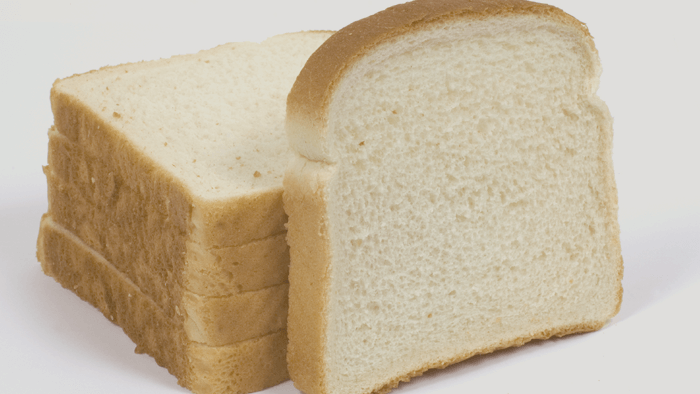
25 Oct Five Good Reasons Why You Should Never Eat White Bread Again
Bread, ‘the fruit of the earth and the work of men’ is the staple of our civilisation. However, it’s time to stop eating white bread and here’s why:
Too much of a Hybrid
Wheat can no longer be considered a healthy food. Even organic, complete and modern wheat is highly hybridised. It has too high a content of glutamine, a protein that tends to irritate the intestinal wall, and contains far fewer minerals and vitamins than it did a hundred years back.
Too low in Fibre, Vitamins and Minerals
White bread is made primarily with enriched white flour, which has had all its nutrients stripped away and replaced with only token amounts of vitamins (hence the word ‘enriched’). This flour is made with only the endosperm, which is primarily starch – which basically translates to pure calories without essential nutrients. So don’t be fooled by labels that indicate that the cereals have been ‘enriched’!
Too Salty
Modern white bread is way too salty. One slice of white bread contains 0.4 grams of salt. That means if you have two slices of toast for breakfast and a sandwich at lunch, you will have had half your daily salt recommendation in bread alone. According to a 2017 study by the George Institute for Global Health, a slice of bread can contain more salt than a single serving packet of fancy sea salt chips! Salt raises our blood pressure, is a major risk for strokes, heart attacks and heart disease, and is the number one killer worldwide.
Too Sweet
White bread is no longer a slow sugar, but rather a fast sugar, with a high Glycemic Index. The Glycemic Index is a numerical Index that ranks carbohydrates based on their rate of glycemic response (i.e. their conversion to glucose within the human body). Glycemic Index uses a scale of 0 to 100, with higher values given to foods that cause the most rapid rise in blood sugar. Pure glucose serves as a reference point, and is given a Glycemic Index (GI) of 100. One slice of white bread (25 grams), made from refined grains, has a GI of 73, which means that consuming it is worse than chewing sugar cubes: it causes our blood sugar to skyrocket, causing our pancreas to panic and discharge a surge of insulin. High levels of insulin can then sharply decrease blood sugar to dangerously low levels and eventually lead to various health problems, including diabetes, obesity and cardiovascular disease.
Too Much Gluten
Modern wheat, derived from hybridisation, has a high gluten content. Gluten is a mixture of proteins, and so the more gluten in flour, the more elastic and mellow the bread. These breads seem more inflated, and therefore sell better but the problem is that our digestive system does not support the amounts of gluten present in modern bread. Gluten intolerance is a source of fatigue, abdominal pain, diarrhoea, gastro-oesophageal reflux, joint problems, eczema, and even neurological disorders.
